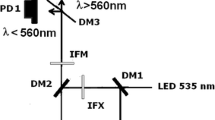Abstract
The exposure of frog skeletal muscle to caffeine (3–4 mM) generates an increase of the K+ (42K+) efflux rate coefficient (k K,o) which exhibits the following characteristics. First it is promoted by the rise in cytosolic Ca2+ ([Ca2+]i), because the effect is mimicked by ionomycin (1.25 µM), a Ca2+ ionophore. Second, the inhibition of caffeine-induced Ca2+ release from the sarcoplasmic reticulum (SR) by 40 µM tetracaine significantly reduced the increase in k K,o (Δk K,o). Third, charybdotoxin (23 nM), a blocker of the large-conductance Ca2+-dependent K+ channels (BKCa channels) reduced Δk K,o by 22%. Fourth, apamin (10 nM), a blocker of the small-conductance Ca2+-dependent K+ channels (SKCa channels), did not affect Δk K,o. Fifth, tolbutamide (800 µM), an inhibitor of KATP channels, reduced Δk K,o by about 23%. Sixth, Ba2+, a blocker of most K+ channels, did not preclude the caffeine-induced Δk K,o. Seventh, omitting Na+ from the external medium reduced Δk K,o by about 40%. Eight, amiloride (5 mM) decreased Δk K,o by 65%. It is concluded that the caffeine-induced rise of [Ca2+]i increases K+ efflux, through the activation of: (1) two channels (BKCa and KATP) and (2) an external Na+-dependent amiloride-sensitive process.
Similar content being viewed by others
Author information
Authors and Affiliations
Additional information
Received: 13 March 1998 / Received after revision: 17 June 1998 / Accepted: 14 September 1998
Rights and permissions
About this article
Cite this article
Venosa, R., Hoya, A. Effect of caffeine on K+ efflux in frog skeletal muscle. Pflügers Arch 437, 417–422 (1999). https://doi.org/10.1007/s004240050796
Issue Date:
DOI: https://doi.org/10.1007/s004240050796




